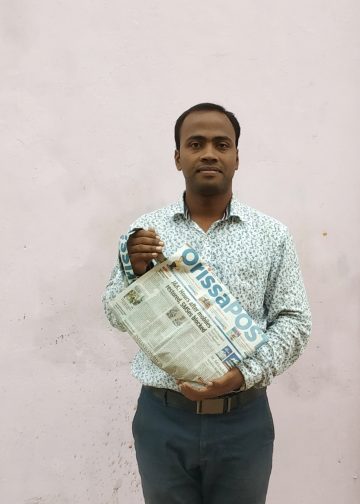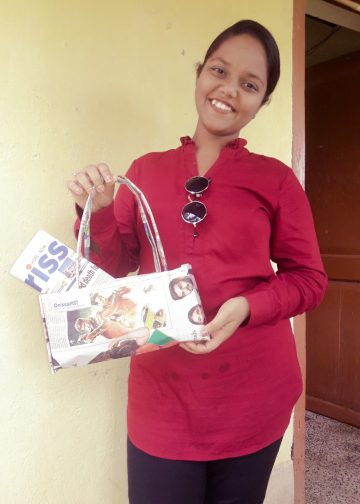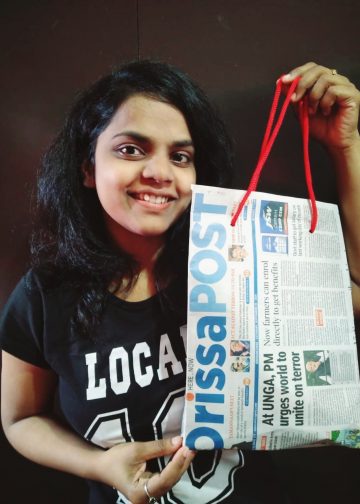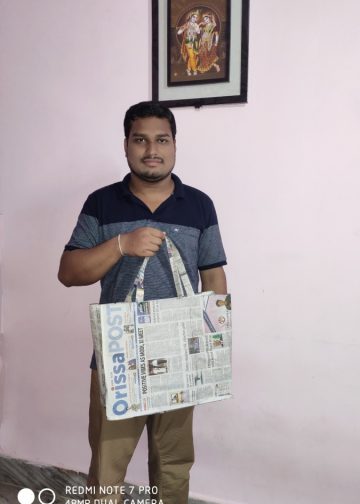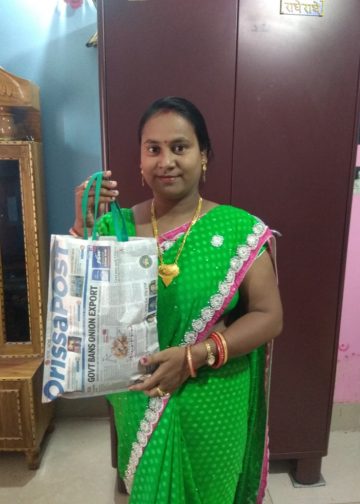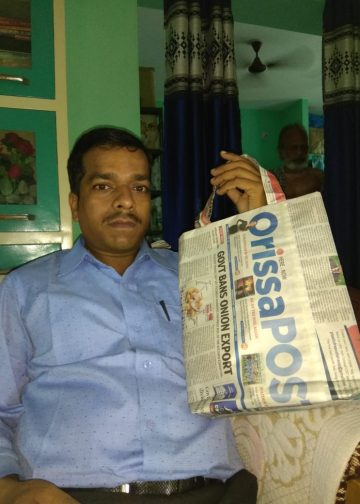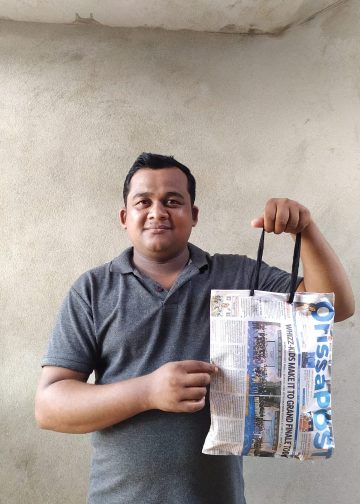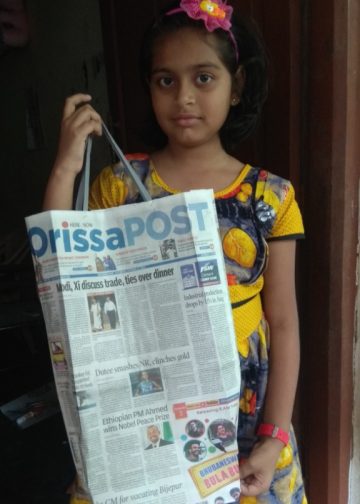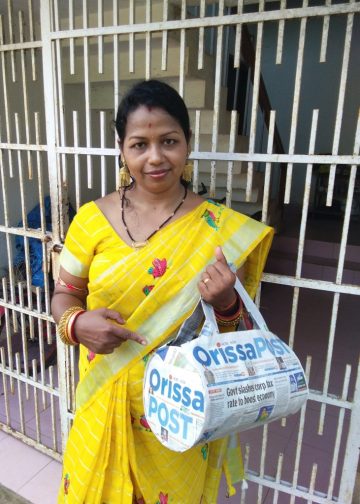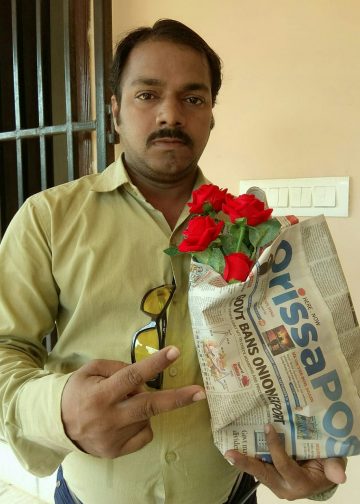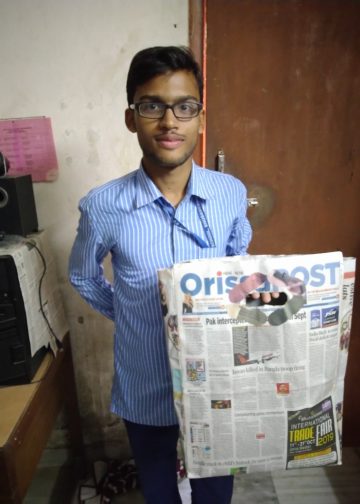Pinaki Panigrahi, a professor of epidemiology and pediatrics at the Child Health Research Institute and Center for Global Health at the University of Nebraska Medical Centre’s College of Public Health, and his team have found a simple and affordable means to prevent the debilitating and often fatal sepsis, caused by the proliferation of microbes in tissues, among infants. His research paper, ‘A randomized synbiotic trial to prevent sepsis among infants in rural India’, was published by the journal Nature recently and has also been discussed in the News & Views segment of the journal. The professor believes his synbiotic preparation can help bring down cases of stunting, one of the key health issues facing children in the state. Excerpts from an e-mail interview Dr Panigrahi had with Ajith Kumar S of Orissa POST:
# Your paper published in ‘Nature’ says you used the synbiotic preparation —Lactobacillus plantarum and fructooligosaccharide — for your study. Does the preparation have any link with traditional medicine practiced in Orissa? How does it help prevent sepsis?
> The preparation has not been derived from any practice from Orissa. But beneficial and medicinal value of curd and gut health in driving overall health, including that in the nervous system, has been described in Ayurveda. There is a need for us to take such therapies through rigorous scientific testing to make it acceptable by the world.
Good bacteria such as L. plantarum when fed early along with prebiotic (substances that promote the growth of beneficial intestinal microorganisms) sugars colonise the infant gut and stop bad bacteria from colonising, attaching, and invading the gut lining into the blood stream. The unexpected finding in our study was the reduction of lower respiratory tract infections such as pneumonia. We and other scientists now believe that such preparations boost the immunity of the developing infant.
Gastrointestinal tract is the largest immune organ. The villi (finger-like projections of the lining of the small intestine) if stretched out flat and laid out can cover surface area as big as a tennis court. This large area with millions of lymphoid cells is being stimulated by several million good bacteria, which produces effects in distant organs such as the lungs.
# What are the implications of the study for the common people of countries such as India? How far is the study from getting translated into medical applications?
>Past studies on probiotics have shown mixed results. The biggest shortcoming of these studies was the small size of the sample; they numbered between a few hundred to under 1,400. Also, people have used probiotics available in the market rather than looking for a different candidate that may work. While our study took 15 plus years to complete, with more than 4,500 infants enrolled, we now have robust evidence that this works for the specific condition (sepsis and respiratory tract infections). The synbiotic preparation can be manufactured locally and sold or distributed by the government as a really inexpensive oral vaccine. So, anyone will have access to it.
When we say common people, it is the not-so-affluent people of the society. This is the population that also gets exposed to poor sanitation and hygiene — both mothers and babies. In babies, when there is bombardment of the intestine with many types of bad bacteria in large numbers during the first two years of life, a condition called tropical enteropathy or gut dysfunction results ultimately in stunting (reduced height for age as per WHO). But stunting is not just about height; there are various other serious ramifications. These children have lower cognitive development. This, when coupled with intrauterine stress and fat accumulation in the early couple of years, results in chronic disease such as diabetes and hypertension in adulthood. Can Orissa, India, or any other country for that matter handle this disease burden? How many dialysis units will you open and life-long drugs can you provide, when 40 per cent of Indian children under two are stunted. To me, it is a time bomb, already showing signs that it could explode anytime. I hope policymakers of our state and the country will step in to translate our large study into scale.
# Why was Orissa chosen for the study and what unique conditions made it an ideal place for your work?
>When I started work more than 15 years ago, Orissa had one of the highest neonatal and infant mortality rates in the country. It also has geographical diversity — coastal, tribal, mining and other areas. So, by taking two large sites in Orissa, we were moderately confident about having a good representation of India.
# Can your preparation be used to treat sepsis?
This is a preventative therapy — like a vaccine. So, you cannot treat an infant that already has sepsis with this preparation. Future work will show if this can be used as an “adjunct” and when it can be used.
# A bit about yourself and your association with Orissa, besides having conducted this study here.
I went to Ramakrishna Mission ME school, then to Unit-1 government high school, BJB College and finally graduated from MKCG Medical college. I had the best education one could have anywhere in the world at that time.
After coming to USA, I did further clinical training and research at University of Maryland and the Uniformed Services Medical School in Bethesda, before going to University of Nebraska as the founding Director of a new Center for Global Health. I was a tenured senior faculty in the department of pediatrics at University of Maryland school of medicine. I have helped establish the first full-fledged institute of public health in the country (Asian Institute of Public Health). To the best of my knowledge, this is the only public health institution that conducts hardcore hospital and field-based research along with service and offer MPH and other relevant courses. We need many trained public health personnel in the country and graduates from AIPH have already made a mark in the state, nationally and internationally. Other faculty members publish in high impact journals and attract researchers and educators from around the world to Orissa.
More:
# What is a synbiotic preparation?
>It is a combination of probiotic — a microorganism introduced into the body for its beneficial qualities — and a prebiotic — a non-digestible food ingredient that promotes the growth of beneficial microorganisms in the intestines.
# Who were the studies conducted on?
> It was conducted on full-term and late-preterm infants. They were given the synbiotic preparation daily for one week beginning around postnatal day 3.
# The method and results in a nutshell
>The double-blind trial, with a placebo control, began to enrol infants in 2008. The synbiotic treatment significantly lowers the number of late-onset sepsis cases during the first two months of life, the time frame monitored in the trial. The treatment reduced the risk of sepsis or death by “an astonishing 40%, from 9.0% in the placebo group to 5.4% in the synbiotic group”, according to ‘Nature’. It further states that taking margins of error of this estimate, the relative risk reduction could be anywhere from about 25% to 50%.
# Benefits observed
>Substantial reductions in sepsis, diarrhoea and umbilical-stump infection.
# Where did the funding for research come from?
> National Institutes of Health (NIH) – over $10 million
# Where was the bacterial strain used in the study extracted from?
>The strain L. plantarum was cultured from the stool of an 11 month-old healthy infant in Maryland. Its origin is important as it has been isolated from a healthy infant and would have played a vital role in protecting that child against infections.
# Why was the study done?
The problem of neonatal sepsis — the morbidity and mortality associated with the condition — is huge in India. But no one was working on this. The small studies conducted in hospitals provided little information.
# Can the synbiotics cocktail be effective in other populations, too, such as pre-term infants?
>Fresh studies are required to find that out as infections may vary with geography. It would be better to look for a very specific probiotic, for a specific disease state, for a specific population, at a specific age.
# The next step?
>Additional trials in different populations across countries that have high rates of sepsis and neonatal/infant deaths and give this to all babies as an oral vaccine.





